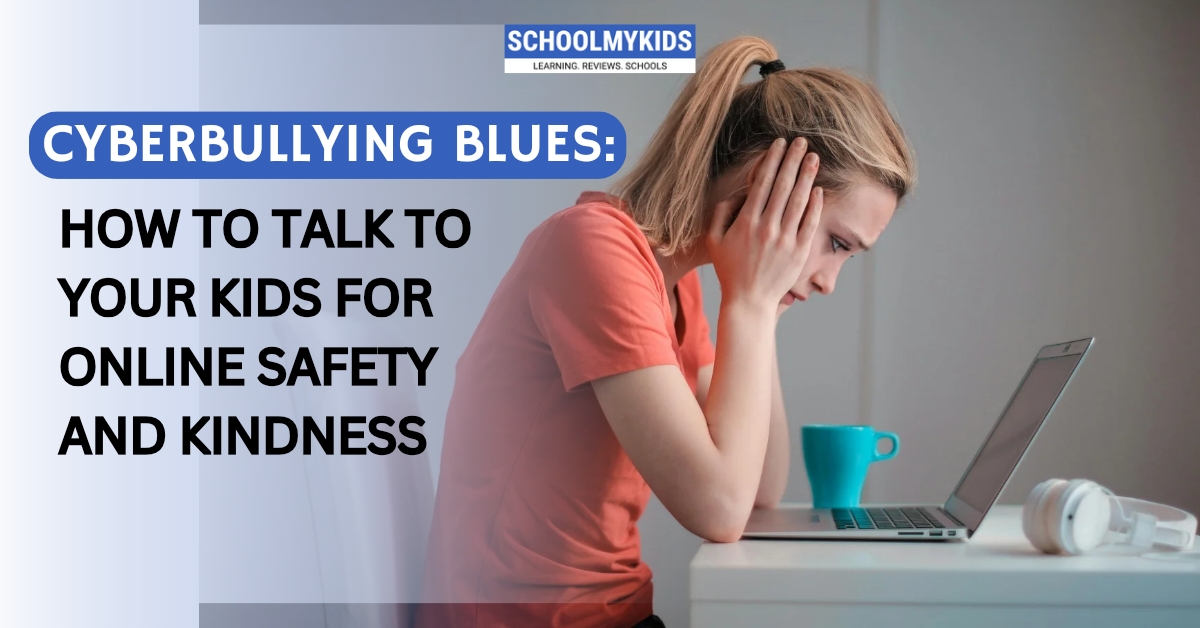The internet. It is a vast, wondrous space with information, connection, and endless entertainment. But like any powerful tool, it needs careful navigation. Kids, especially, tend to dive headfirst into this digital world. In this age of constant connection, a new kind of hurt has emerged: cyberbullying.
Let’s face it: The cloak of anonymity online encourages negativity. When you know no one can reach you, your words start to fly freely. And when they are laced with cruelty, their impact is known to be devastating. But fear not, fellow parents!
Here’s how we can navigate these cyberbullying blues and equip our kids to be safe and kind online.
How to help your child deal with Cyberbullying?
The Kindness Conversation
The best defense is a good offense – of kindness, that is! Talk to your children about empathy and the power of their words. Make them imagine tossing a pebble into a pond. The ripples travel far and wide, just like online words. You can encourage them to think before they post: “Would I say this to someone’s face?”
Building Boundaries
The internet is a fantastic buffet of information, but not everything needs to be consumed. Work with your kids to establish healthy boundaries. Age-appropriate content filters and time limits help ensure they’re exploring safe corners of the web. You can also discuss the curated nature of social media. Those highlight reels don’t show the whole picture, and that’s okay!
The “Think Before You Click” Rule
Unfortunately, the internet isn’t always sunshine and rainbows. Talk to your kids about the dangers of online predators and the importance of online privacy. Let them know they should never share personal information like addresses or phone numbers with strangers. Explain that once something is online, it can be difficult, if not impossible, to completely erase it.
Empowering Your Child
Knowledge is power. Therefore, you need to teach your kids the signs of cyberbullying. This could include mean comments, hurtful messages, or even exclusion from online groups. Let them know it’s not their fault, and there are ways to deal with it. Encourage them to come to you if they face any kind of online negativity.
The Art of Blocking and Reporting
Empower your kids to take action. Most social media platforms have features to block and report bullies. Walk them through the process so they know how to shut down negativity and report it to the appropriate authorities.
The Importance of Open Communication
Here’s the key: create an open and trusting environment where your child feels comfortable talking to you about anything, including cyberbullying. Let them know you’re there to listen without judgment. Their happiness and safety online are paramount.
Practical Tips for Parents
Now that we’ve discussed the emotional aspects let’s go through some practical tips to keep all children safe online:
- Digital Citizenship 101: Consider age-appropriate resources and workshops that teach kids online etiquette, responsible posting, and cyber safety.
- Friend-ify Your Accounts: Be “friends” with your children on social media platforms (with their permission, of course!). This allows you to monitor their activity subtly.
- Password Power: Help your child create strong, unique passwords for each online account. Consider using a password manager for them (and yourself!).
- Privacy Patrol: Review your child’s privacy settings on social media accounts with them. Restrict who can see their posts and profile information.
- The Power of “Off”: Encourage regular breaks from screens. The real world offers many adventures, friendships, and experiences waiting to be explored.
Remember, we can’t shield our kids from everything online. But by fostering open communication, and teaching them empathy and online safety, we can teach them to handle the digital world confidently and kindly. Let’s work together to turn those cyberbullying blues into a symphony of online safety and compassion.









Be the first one to comment on this story.